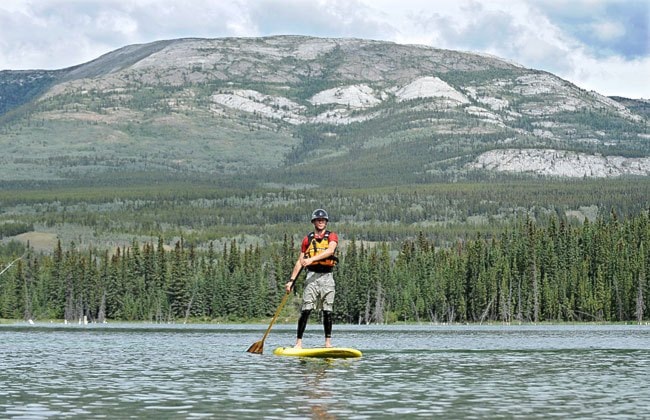When people think of famous city parks, Vancouver’s Stanley Park or New York’s Central Park often spring to mind.
But as storied as those places are, Whitehorse’s parkland would eat them for dinner.
“We have set aside more parkland than any other municipality in Canada. You could fit 19 Stanley Parks into our Chadburn Lake Park alone,” said city parks planner John Glynn-Morris.
On Thursday, Whitehorse residents will have one final say over how the rulebook for those parks will eventually be written.
City staff will showcase the second draft of the new Regional Parks Plan at the Fireweed Market on Thursday evening. Glynn-Morris is the project leader behind the plan, which he says will operate like an official community plan but for parks.
“Whitehorse is a community full of neighborhoods, and while there are some commonalities, each is distinct in its own right,” he said.
“At the city level you’re creating a specific community plan. We’re doing the same thing for parks. Each park gets its own neighborhood plan,” he said.
Similar to the official community plan, the regional parks plan won’t lay out exactly what happens in each park, Glynn-Morris explained. Instead, it sets the ground rules, just as the Hillcrest community plan acted as the rulebook for the debate over the neighbourhood’s rooflines and paved driveways.
The whole project began after the 2010 official community plan designated the city’s five parks, setting aside more than 30 per cent of land within city limits.
“The big outcome from the 2010 plan was that residents said, ‘Let’s be intentional with these amazing spaces.’ We set them aside as parks, but now we have to decide what that word ‘park’ means and what do we want as a community for this park system to be,” he said.
Among the many goals outlined in the draft plan, the city would seek to identify damaged areas of the five parks and come up with a conservation plan to help restore the ecological integrity of those areas.
It would also look at developing a more permanent process for regulating motorboat use in the parks, limit public access to areas that are “too environmentally sensitive for human use” while coming up with alternate viewing options for those areas including re-routing trails and off-site interpretation.
Once the regional parks plan is approved, it will be used as a guiding tool to help decide things like whether to build permanent canoe and kayak facilities at Schwatka Lake, or allow ATV use on all or some of the upper Grey Mountain trails. Those decisions would unfold as part of each park’s own plan, similar to the neighborhood community plans, Glynn-Morris said.
He acknowledged that while many people are tired of plans and public engagement, helping shape the regional parks plan is an important responsibility for Whitehorse citizens.
“I think based on the history that’s gone into it, in many ways these parks embody the very reasons we choose to live, work and play in Whitehorse.
“This is an opportunity to really shape some of the best public assets we have in Whitehorse, to shape the type of community we want to live in,” he said.
Contact Jesse Winter at jessew@yukon-news.com
